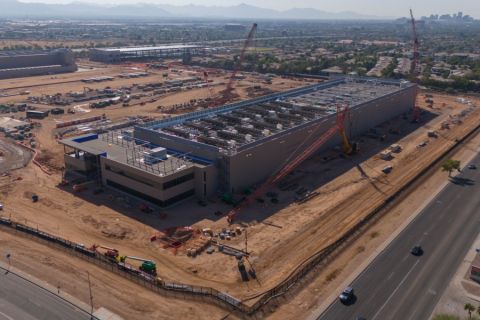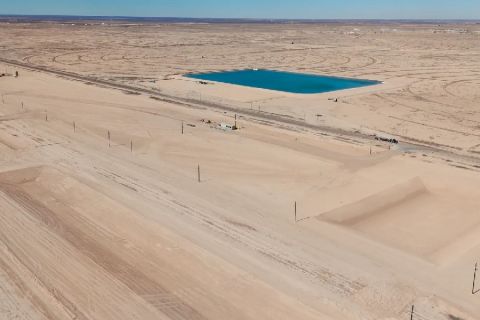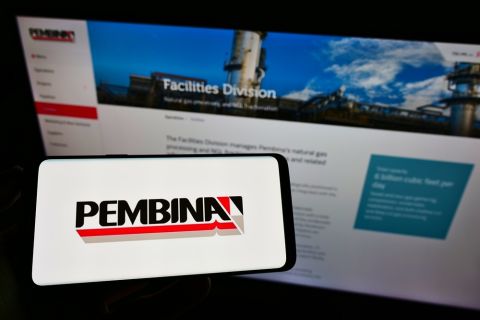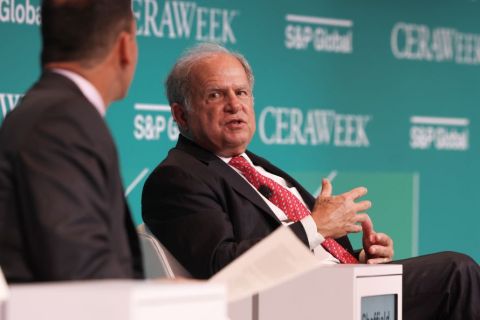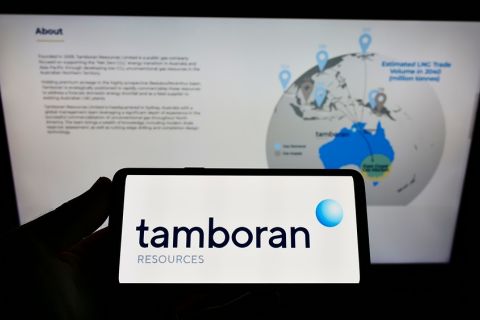Jordan Blum, editorial director, Hart Energy: We are here at SUPER DUG Conference & Expo in Fort Worth, Texas. I'm joined by Mark Pearson, the president and CEO of Liberty Resources II. Thank you so much for joining us, we really appreciate it. You all just had a big asset sale in the Bakken to Silver Hill Energy Partners. I wanted you to just take me through the process and maybe even the history of Liberty a little bit and how Silver Hill won out.
Mark Pearson, president and CEO, Liberty Resources II: I am happy to do that. First of all, it’s great to be here, Jordan. I appreciate the invitation. It's been an exciting time in the Bakken in recent years. A lot's going on there despite the rig counts, which some might say at only 34 is not very active, but we'll get back to that. But on our process, yes, we just recently transacted to Silver Hill Energy Partners, the Liberty assets. We had 85,000 net acres, an active continuous drilling rig program, about 20,000 bbl/d of gross production at the time when we handed everything over and it was an active process. We had an investor group that was interested in getting out of oil and gas and we were one of their portfolio companies that they needed to exit.
And so we ran a process in the third quarter of last year, and it was an active process. We had over 30 companies in the data room and had over 20 management presentations. Ended up with around, I think it was 13 [bids] to 15 bids that we had for the assets. So altogether it was a full broad active process with Silver Hill and with the group that we transacted with. I think everyone is pleased with that — our investors are that they came in [and are pleased with] what they got out with. It was a great asset for Silver Hill as well to move forward and to significantly grow the production.
JB: A lot of this deal and just overall Bakken trends is really about the so-called extended core. I just wanted to get your take on how that's playing out for the future as well.
MP: If we think about when we operated in Liberty I, we were operating from 2010 to 2013 in the Bakken. We sold those assets. They were in South Williams and North Mackenzie counties, [North Dakota] and we sold those assets in 2013. [We] went back into the basin to what was at that time called Tier 2 acreage. And what we've been able to do over the last 10 years is basically use technology to improve the performance to what is now referred to as the extended core because it's getting the same economic well results as what we were getting 10 years ago in the core of the basin. We've done that through a whole variety of incremental steps in technology from understanding the rock better, what characteristics make a Three Forks well better in some parts of the basin?
What characteristics of the middle Bakken make a middle Bakken well better [than] in the majority of the basin? What's happening with our completion designs? How much height growth are we getting? How much water do we pull in when we pump a frac that's more than 1,000 lb/ft. A lot of technology changes, a lot of drilling improvements and the speed of our wells. I was commenting just now that 15 years ago, I think our first 1-mile lateral well was a 25 day well. Our average 2-mile laterals this past year were 10-day wells. So just big improvements in operating efficiency and in cost reduction made what used to be called Tier 2 acreage now really be referred to as extended core acreage.
JB: And you have a lot of expertise too in EOR, which is also playing a bigger and bigger role in the Bakken.
MP: I think it has a big role to play in the future. I think as an industry, we're still testing that right now. Liberty has run three phases of EOR work, including three different field pilots over the last five years. And we've got one well with two cycles now of huff and puff on it that's showing incremental oil production. I think we sustained over about a year and a half about a 25% increase in production and we have three large operators this year that are going ahead with full drill site EOR pilots in the Bakken. So I think it's exciting to think that we can maybe move recovery from sub 10% of the oil in place to maybe something that's 15% to 20% of recovery, maybe even bigger. Obviously, if you look at conventional oilfields, we're going to look with EOR, we're going to look at 50% to 60% recovery. If we can move unconventionals from sub 10% to 15%- 20%, that's a lot of oil that we can produce.
JB: Very good. Now, a lot of what's happening overall in the industry, there's tons of consolidation going on in every basin, including the Bakken. There's a lot of potential management teams sitting on the sidelines, we'll see how that plays out. I just wanted to get your take on that and the future for yourself and your team as well.
MP: Well, I think the last question would be a hard one to answer, but I can take a stab at that in a minute, but absolutely. On M&A in the basin, you've got two drivers really. One for established operators that have been drilling in the core of the Bakken and that inventory is gone. The rigs in the Bakken now are drilling the extended core of what used to be called Tier 2 because we fully drilled up the core of the Bakken to a great extent. And so if you're a player and you're a large player and you are an early entrant in the Bakken and you just focused on the best rocks, you're out of inventory today. If you want to stay in the Bakken and you want to continue developing, you have to grow. You have to consolidate some acreage where you can and also put a draw rig to work.
If you are operating those PDP [proved developed producing] assets, then scale matters. And so it just makes sense, just like we've been seeing in the Permian, we're going to see more consolidation go on in the Bakken just because of the core of the Bakken being fully drilled. And then I think there is a third driver as well; that there are a number of private equity teams that have been operating there for several years and their time is up. They're going to need to return money to the limited partners and they're going to need to find an exit out of the bargain. So you're going to see three drivers of M&A in the Bakken. As far as management teams, there's not a lot of management teams I think [that are] on the sidelines. There are some, obviously the more deals that get done, the more management teams.
We're going to be on the sidelines for a couple of months here. I can tell you what I'm doing for the next couple of months, which is spending more time with my kids and playing a little more golf than I've played in the last 15 years. Beyond that, the Liberty team, come August or September, we're going to be back in the hunt for that opportunity. The Bakken is a great basin. There are 34 rigs running there today drilling as much footage in the pay as 200 rigs used to drill. So there's more wells ahead for the barking than have been drilled to date. It is an exciting opportunity, and those wells don't just come with a click of the fingers they need a lot of hard work and they need a lot of experience to move the needle forward.
JB: Great. You’re eager to see what the future holds. Thank you so much for joining us at SUPER DUG. We really appreciate it.
MP: My pleasure.
JB: To read and watch more, please visit online at hartenergy.com.
Recommended Reading
LandBridge Chair: In-basin Data Centers Coming for Permian NatGas
2024-06-28 - Newly public Delaware Basin surface-owner LandBridge Co. has a 100-year lease agreement with one developer that could result in ground-breaking in two years and 1 GW in demand.
Permian’s LandBridge Prices IPO Below Range at $17/Share, Raising $247MM
2024-06-28 - Houston-based LandBridge, which manages some 220,000 surface acres in the Permian Basin, kicked off trading at $19 per share, more than 10% above its listing price.
Pembina Pipeline to Offer $690MM in Public Debt
2024-06-27 - Pembina Pipeline Corp. is offering senior unsecured debt to extend maturity dates for near-term debt that matures between 2026 and 2029.
Scott Sheffield Among Investors in Australian Shale Gas IPO
2024-06-27 - The operator who sold Pioneer Natural Resources Co. to Exxon Mobil in May for $59.5 billion joins his son Bryan Sheffield in shale gas investment Down Under.
Aussie Shale’s Tamboran Resources Prices IPO in Range but for Fewer Shares
2024-06-27 - Among those buying the Australian shale-gas developer’s pre-trade shares were U.S. wildcatter Bryan Sheffield and completions pressure-pumper Liberty Energy.

